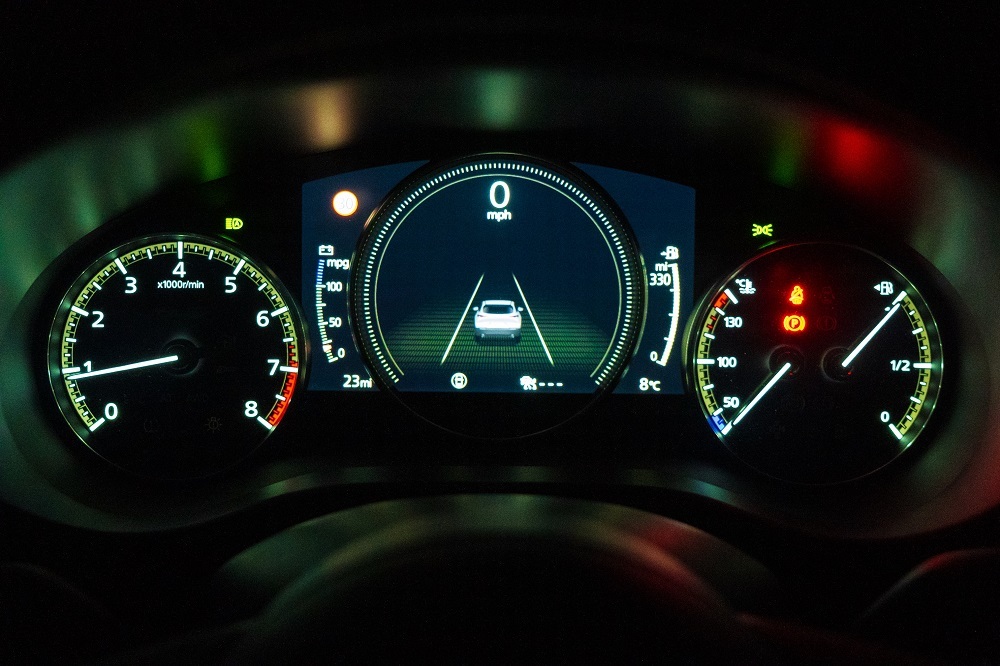
An Introduction to Advanced Driver Assistance Systems (ADAS)
In today's rapidly evolving automotive landscape, advanced driver assistance systems (ADAS) have emerged as a game-changing technology, revolutionising the way we interact with our vehicles and enhancing road safety. Since we're pro-safety here at DEKRA, we decided to create this introduction to ADAS since these systems will become more prominent in the years to come.
In this article, we'll take a look at what these systems are, list the different types, give a short overview of how they work, and look at the benefits they offer. We will also share a few scenarios of how they effectively contribute to accident prevention. Let's get to it...
What are Advanced Driver Assistance Systems?
Advanced driver assistance systems are technologies integrated into vehicles to assist drivers and enhance safety on the road. These systems use sensors, cameras, and advanced algorithms to monitor the vehicle's surroundings, analyse data in real-time, and provide valuable information to the driver. ADAS technologies can help drivers with tasks such as maintaining a safe distance from other vehicles, staying within lanes, detecting blind spots, and avoiding collisions. They act as a co-pilot, augmenting human driving capabilities and mitigating potential risks.

Photot credit: Nick Fewings on Unsplash
Different types of ADAS
ADAS encompasses a diverse range of innovative technologies, each aimed at addressing specific aspects of driving safety. Some of the key types of ADAS include:
- Adaptive Cruise Control (ACC): This system uses radar or sensors to maintain a set distance from the vehicle ahead, automatically adjusting the vehicle's speed to match the flow of traffic.
- Lane Departure Warning (LDW) and Lane Keep Assist (LKA): LDW alerts the driver when the vehicle unintentionally drifts out of its lane, while LKA actively intervenes to steer the vehicle back into its lane.
- Forward Collision Warning (FCW) and Automatic Emergency Braking (AEB): FCW warns the driver of an imminent collision, while AEB automatically applies the brakes to prevent or lessen the seriousness of a collision.
- Blind Spot Detection (BSD) and Rear Cross-Traffic Alert (RCTA): BSD monitors the vehicle's blind spots and alerts the driver of nearby vehicles, while RCTA warns of approaching vehicles when reversing.
- Parking Assistance Systems: These systems utilise sensors and cameras to aid in parking manoeuvres, providing visual and auditory cues to assist the driver in navigating tight spaces.
- Traffic Sign Recognition (TST): This feature uses cameras or sensors to detect and recognise traffic signs, providing visual or audible alerts to the driver based on the detected signs.
- Driver Drowsiness Detection: It monitors the driver's behaviour, such as steering patterns and eye movement, to detect signs of drowsiness or fatigue and prompts them to take a break if necessary.
Read: Reducing road accidents: The crucial role of DEKRA vehicle inspections in road safety
How do advanced driver assistance systems work?
ADAS rely on a combination of sensors, cameras, and sophisticated algorithms to view the vehicle's surroundings and interpret critical data in real-time. These systems utilise technologies such as radar, lidar (light detection and ranging), and cameras to gather information about the road, traffic, and potential hazards. The collected data is processed by onboard computers, which analyse and interpret it to make informed decisions. This can include identifying obstacles, recognising lane markings, detecting pedestrians, and predicting collision risks. Based on these assessments, ADAS can deliver alerts, warnings, or even take autonomous actions to prevent accidents.

Photot credit: CHUTTERSNAP on Unsplash
What are the benefits of ADAS?
The incorporation of advanced driver assistance systems in modern vehicles offers numerous advantages to both drivers and society as a whole. Key benefits include:
- Enhanced safety: ADAS act as an additional pair of eyes, continuously monitoring the road and potential hazards. By providing timely alerts and interventions, these systems significantly reduce the risk of accidents caused by human error, fatigue, or distractions.
- Accident prevention: ADAS can identify potential collisions and automatically engage protective measures such as emergency braking or steering assistance to avoid or lessen the consequences of accidents.
- Improved comfort and convenience: Systems like adaptive cruise control and parking assistance alleviate the burden on drivers, enhancing comfort and reducing the stress associated with certain driving tasks.
- Environmental impact: ADAS can contribute to fuel efficiency by optimising driving patterns and reducing unnecessary acceleration or deceleration, leading to lower emissions and a smaller ecological footprint.
Read: Eco-Friendly Driving: How to Reduce Your Carbon Footprint
Three real-world scenarios showcasing how ADAS can help prevent accidents
Scenario 1
A driver is momentarily distracted while approaching a congested intersection. The Forward Collision Warning (FCW) system in their vehicle quickly detects the slowing traffic ahead. It issues an audible and visual warning to alert the driver, allowing them to react in time and apply the brakes, preventing a potential rear-end collision.
Scenario 2
A driver is driving on a long stretch of highway and unintentionally starts drifting out of their lane due to fatigue. The Lane Departure Warning (LDW) system in their vehicle recognises the lane departure and sends an alert, prompting the driver to correct their course. If the driver fails to respond, the Lane Keep Assist (LKA) system intervenes, gently steering the vehicle back into the lane, thereby preventing a collision with oncoming traffic.
Scenario 3
A driver is preparing to reverse out of a parking spot in a crowded parking lot. However, their rearward visibility is limited, increasing the risk of colliding with an approaching vehicle. Fortunately, the vehicle's Blind Spot Detection (BSD) and Rear Cross-Traffic Alert (RCTA) systems detect the presence of an approaching vehicle and provide audible and visual warnings to the driver, allowing them to stop and avoid a potential accident.
Read: Road Safety Tips: How to navigate South Africa's roads safely
Advanced driver assistance systems are revolutionising vehicle safety and transforming the driving experience. These integrated technologies, utilising sensors, cameras, and advanced algorithms, assist drivers in various ways, from maintaining safe distances to avoiding collisions and navigating challenging situations. Through real-world scenarios, we witness the tangible impact of ADAS in preventing accidents and mitigating risks on the road. As ADAS continues to evolve, it holds the promise of further advancements in vehicle safety, making our roads safer for everyone and shaping the future of transportation.

Photot credit: Waldemar on Unsplash
That said, driving a vehicle with advanced driver assistance systems isn't the only way to have a safe journey. Driving a roadworthy vehicle is the number one way to ensure everybody reaches their destination, and it's your responsibility to make sure that your car is in the best condition possible. Lucky for you, DEKRA can help with that. Our Roadworthy Inspection is a comprehensive evaluation conducted by DEKRA to assess the safety, condition, and compliance of a vehicle, ensuring it meets the required standards for roadworthiness. If it's been a while since you last had your car checked, get in touch with us today to book your inspection.